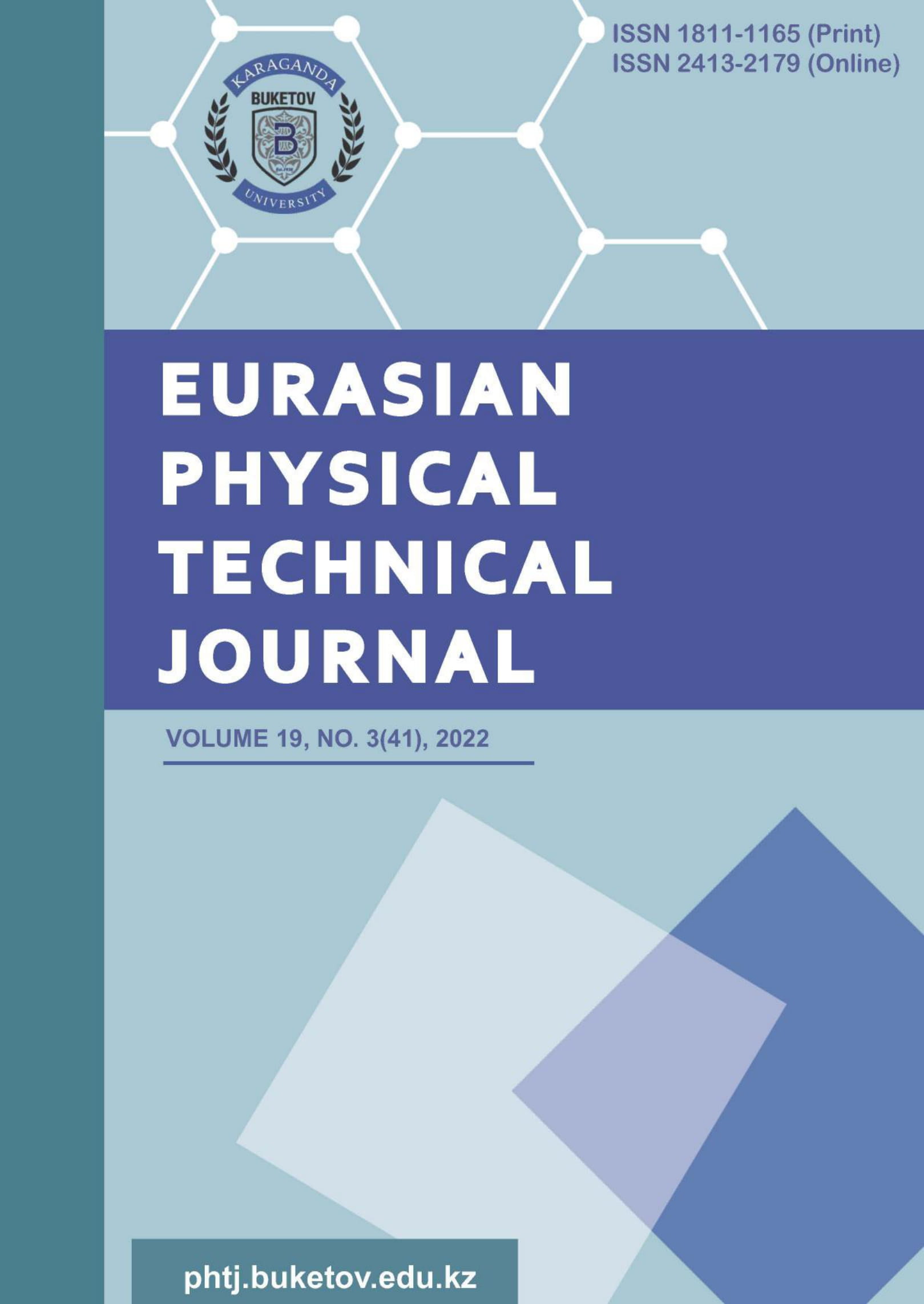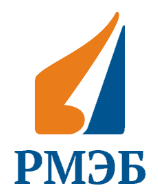ELECTRON KINETICS OF YTTRIUM IRON GARNET AFTER SWIFT HEAVY ION IMPACT
DOI:
https://doi.org/10.31489/2022No3/23-28Keywords:
swift heavy ion track, electron excitations, complex dielectric function, ion energy loss, Monte Carlo simulationsAbstract
The TREKIS Monte-Carlo model was applied to study the temporal electronic kinetics of yttrium iron garnet
after a swift heavy ion impact. Cross sections of incident particles interaction with the target were determined
within complex dielectric function-dynamic structure factor formalism. We found two modes of the spatial
propagation of electronic excitation: fast delta-electrons form a front of the excitation while electrons produced
due to decay of plasmons generated in a track form the second front slowly following behind the first one.
Analysis of mechanisms of target lattice heating pointed to an important contribution of the potential energy
released due to recombination of valence holes generated in an ion track. An increase of the excess lattice energy
due to elastic scatterings of electrons and holes described with Mott cross-sections is minor. In contrast, complex
dielectric function formalism demonstrates the significant contribution of these processes to the heating of the
lattice.
References
Komarov F.F. Defect and track formation in solids irradiated by superhigh-energy ions. Physics-Uspekhi. 2003. Vol. 46, pp. 1253–1282.
Miterev A.M. Theoretical aspects of the formation and evolution of charged particle tracks. Physics-Uspekhi. 2002. Vol. 45, pp. 1019–1050.
Baranov A.A., Medvedev N.A., Volkov A.E., et al. Effect of interaction of atomic electrons on ionization of an insulator in swift heavy ion tracks. Nuclear Instruments and Methods in Physics Research B. 2012. Vol. 286, pp. 51–55.
Komarov F.F. Nano- and microstructuring of solids by swift heavy ions. Physics-Uspekhi. 2017. Vol. 60, pp. 435–471.
Wesch W., Wendler E. Ion Beam Modification of Solids, Ion-Solid Interaction and Radiation Damage. Berlin: Springer, Cham, 2016, 534 p.
Jana K.K., Ray B., Avasthi D.K., Maiti P. Conducting nano-channels in an induced piezoelectric polymeric matrix using swift heavy ions and subsequent functionalization. Journal of Materials Chemistry. 2012. Vol. 22, pp. 3955.
Kozlovskiy A.L. Study of the wear resistance degradation kinetics of aln ceramic under heavy ion irradiation. Eurasian Physical Technical Journal. 2022. Vol. 19, pp. 10–14.
Van Hove L. Correlations in Space and Time and Born Approximation Scattering in Systems of Interacting Particles. Physical Review. 1954. Vol. 95, pp. 249–262.
Ritchie R.H., Howie A. Electron excitation and the optical potential in electron microscopy. Philosophical Magazine. 1977. Vol. 36, pp. 463–481.
Boutboul T., Akkerman A., Breskin A., Chechik R. Electron inelastic mean free path and stopping power modelling in alkali halides in the 50 eV–10 keV energy range. Journal of Applied Physics. 1996. Vol. 79, pp. 6714.
Eckstein W. Computer Simulation of Ion-Solid Interactions. Berlin, Heidelberg: Springer Berlin Heidelberg, 1991, 296 p.
Gervais B., Bouffard S. Simulation of the primary stage of the interaction of swift heavy ions with condensed matter. Nuclear Instruments and Methods in Physics Research B. 1994. Vol. 88, pp. 355–364.
Medvedev N.A., Rymzhanov R.A., Volkov A.E. Time-resolved electron kinetics in swift heavy ion irradiated solids. Journal of Physics D: Applied Physics. 2015. Vol. 48, pp. 355303.
Rymzhanov R.A., Medvedev N.A., Volkov A.E. Effects of model approximations for electron, hole, and photon transport in swift heavy ion tracks. Nuclear Instruments and Methods in Physics Research B. 2016. Vol. 388, pp. 41–52.
Rymzhanov R.A., Medvedev N.A., Volkov A.E. Monte-Carlo modeling of excitation of the electron subsystem of Al2O3 and polyethylene after swift heavy ion impact. Nuclear Inst. and Methods in Physics Research B. 2014. Vol. 326, pp. 238–242.
Rymzhanov R., Medvedev N.A., Volkov A.E. Damage threshold and structure of swift heavy ion tracks in Al2O3. Journal of Physics D: Applied Physics. 2017. Vol. 50, pp. 475301.
Terekhin P.N., Rymzhanov R.A., Gorbunov S.A., et al. Effect of valence holes on swift heavy ion track formation in Al2O3. Nuclear Instruments and Methods in Physics Research B. 2015. Vol. 354, pp. 200–204.
Ridgway M.C., Bierschenk T., Giulian R., et al. Tracks and Voids in Amorphous Ge Induced by Swift Heavy-Ion Irradiation. Physical Review Letters. 2013. Vol. 110, pp. 245502.
Rymzhanov R.A., Medvedev N., Volkov A.E., O’Connell J.H., Skuratov V.A. Overlap of swift heavy ion tracks in Al2O3. Nuclear Instruments and Methods in Physics Research B. 2018. Vol. 435, pp. 121–125.
Tao S., Chao H., Hailong D., et al. First principles study of structure, electronic and optical properties of Y3Fe5O12in cubic and trigonal phases. Materials Science- Poland. 2015. Vol. 33, pp. 169–174.
Henke B.L., Gullikson E.M., Davis J.C. X-Ray Interactions: Photoabsorption, Scattering, Transmission, and Reflection at E = 50-30,000 eV, Z = 1-92. Atomic Data and Nuclear Data Tables. 1993. Vol. 54, pp. 181–342.
Mott N.F., Massey H.S.W. The Theory of Atomic Collisions. London: Oxford University Press, 1985, 858 p.
Jenkins T. M. Monte Carlo Transport of Electrons and Photons. Boston, MA: Springer US, 1988, 656 p.
Wemple S.H., Blank S.L., Seman J.A., Biolsi W.A. Optical properties of epitaxial iron garnet thin films. Physical Review B. 1974. Vol. 9, pp. 2134–2144.
Littmark J.F., Ziegler J.P., Biersack U. The Stopping and Range of Ions in Solids. New York: Pergamon Press, 1985, 321 p.
Akkerman A., Boutboul T., Breskin A., et al. Inelastic Electron Interactions in the Energy Range 50 eV to 10 keV in Insulators: Alkali Halides and Metal Oxides. physica status solidi (b). 1996. Vol. 198, pp. 769–784.
Lide D.R. CRC Handbook of chemistry and physics, 84th ed. Boca Raton: CRC Press, 2003, 2616 p.
Medvedev N., Volkov A.E. Reconciling anomalously fast heating rate in ion tracks with low electron-phonon coupling. 2021. Available at: https://arxiv.org/abs/2109.04401v1.













